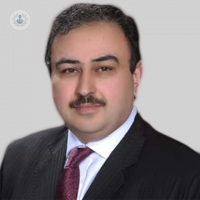Stress fractures of the foot : Part two
Written by:In the first part of this series, we spoke to Mr Turab Syed, a top consultant orthopaedic surgeon in London, Manchester and Stirling, about stress fractures and how they occur. Now he has returned for the second and final part to share his knowledge on the symptoms, diagnosis and treatment for those unfortunate enough to suffer a stress fracture in one of their feet.

What are symptoms?
The most common symptom of a stress fracture of the foot is pain on the forefoot that worsens with activity but improves with rest. As previously mentioned, the patient won’t be able to pinpoint an exact moment that caused the injury. Night pain occasionally may occur. During later stages if treatment not instituted, the pain may persist after cessation of activity.
How are stress fractures diagnosed?
Diagnosis is done by clinical examination by an orthopaedic surgeon or a physiotherapist. Though X-rays are the most common first radiological investigation, but sometimes x-rays show no fracture, despite the patient feeling pain. In such cases, an MRI scan is recommended (a gold standard to look for stress fracture / bone marrow oedema syndrome) besides a bone scan.
MRI Scan can pickup bone marrow stress response in the bones which may be the cause of the pain. Bone marrow stress response precedes stress fracture, so if spotted early you will be advised to take preventative action like reducing activity, in order to prevent stress fracture.
How are stress fractures treated?
The most common treatments for stress fractures are:
- Selective rest / reduction of activities, off-loading the limb by use of moon boot and crutches
- Having bone physiology checked and corrected if necessary
- Increase vitamin D and calcium intake
- Increase vitamin C intake (important for healing)
- Rest
Most fractures heal within 6-12 weeks, but if the pain continues further medical attention and surgery may be required.
Sometimes a bone stimulator can be used under the guidance of a physician or an orthopaedic surgeon to promote and accelerate healing, especially for those with risk factors like diabetes or smoking.
Rarely surgical intervention is required if conservative measures fail.
How long does it take to heal?
The length of time needed for a stress fracture to heal depends on a number of factors;
- The most important is how quickly it is diagnosed, once you feel symptoms, the quicker you see your GP, the quicker you can be treated and recover.
- Whether or not someone has any underlying bone-related conditions is also a factor. Conditions like osteoporosis or osteopenia which can be brought on by age, medical conditions or cancer medication, can slow recovery down.
- Low vitamin D levels also contribute to slower recovery. This is because the vitamin D we get from the sun helps the body absorb calcium, which is vital for strong bones. So, those in the Northern hemisphere, in countries with less sunlight (e.g., Scandinavia, North Europe and the UK) will generally take longer to recover. It is recommended that such people take over-the-counter supplements to keep their vitamin D levels high.
- Athletes can sometimes take longer to heal due to more serious or repeated stress fractures which occur because of their profession.
- Female athletes are particularly vulnerable to stress fractures and can take longer to heal. This is because of the “female athlete triad”, a combination of menstrual dysfunction, low bone density.
Generally speaking, healthy people with no underlying bone conditions and sufficient levels of vitamin D recover quicker than those mentioned above.
If a fracture is present for a long time, because someone hasn’t had it assessed by a medical professional, a black line may form on the foot. This would suggest that the body is trying to “self-heal” through periosteal bone formation, which is when the body forms new bone in order to attempt to fix the damaged area. This can be problematic as the new bone grows on top of the old, still damaged one, possibly causing further pain and discomfort in the already injured area.
If you think you might be suffering from a stress fracture you should seek the advice of an orthopaedic specialist. Visit Mr Turab Syed’s Top Doctors profile, where you can request an appointment with him.


